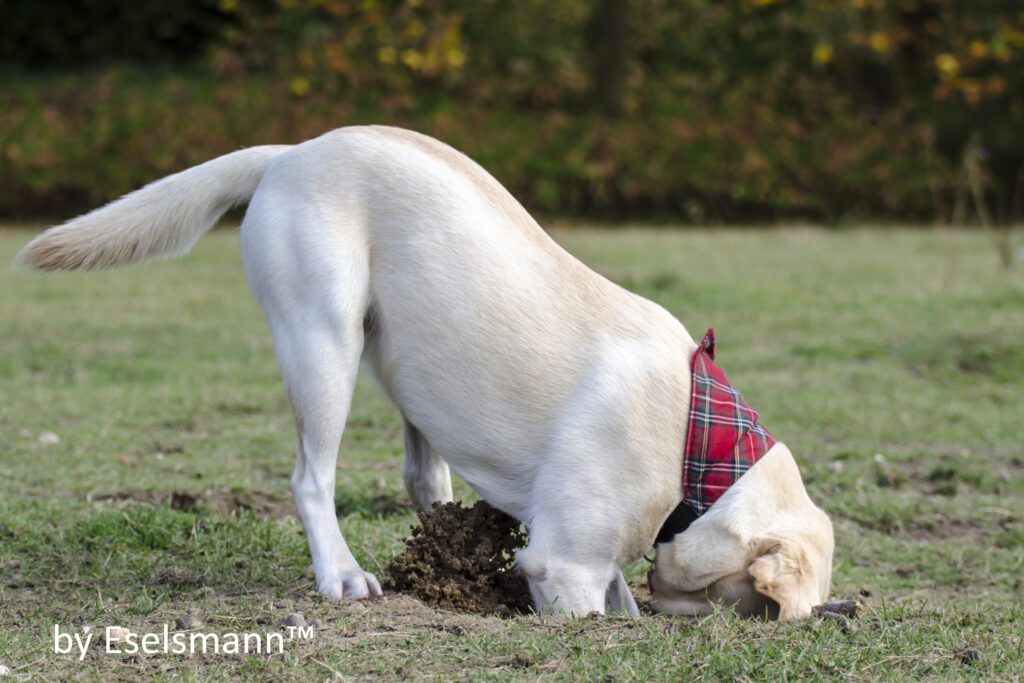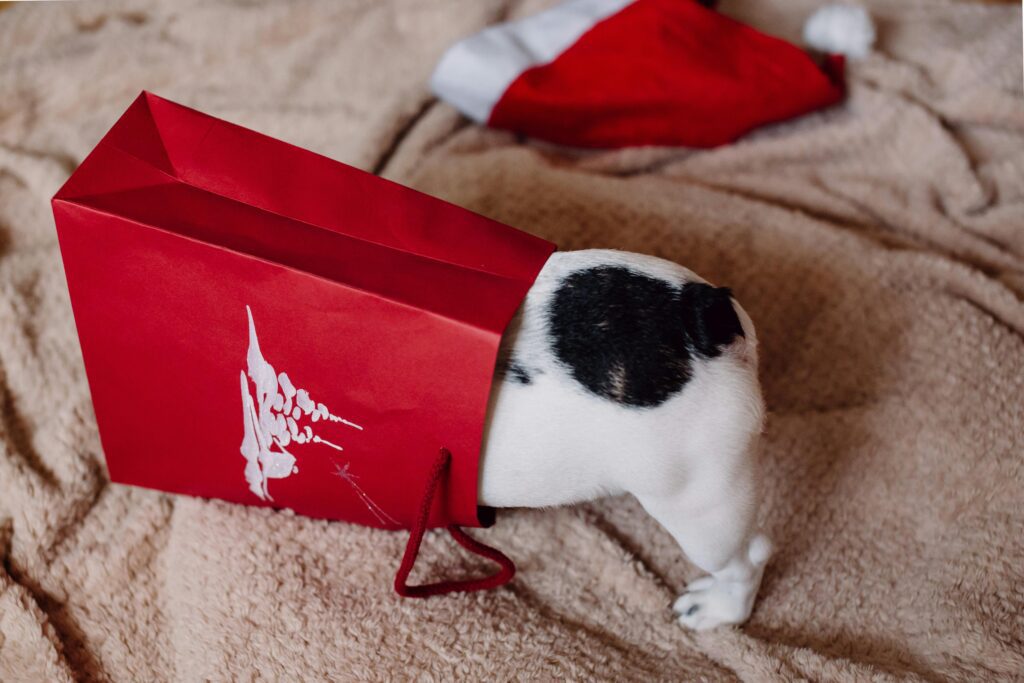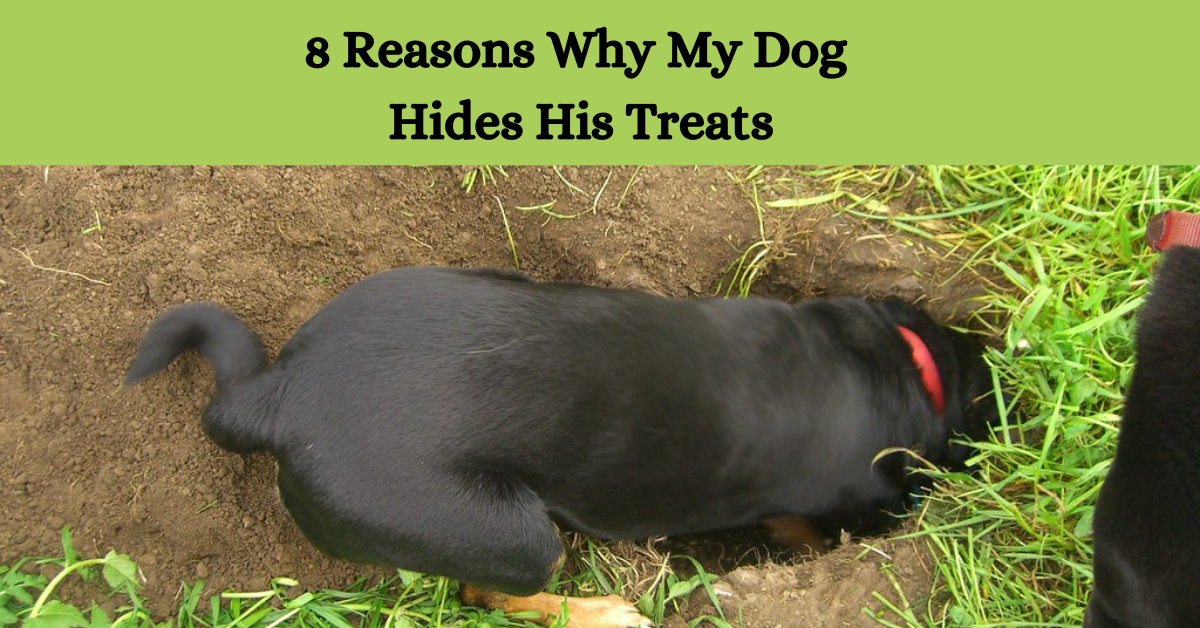Introduction:
Have you ever caught your furry companion stashing treats all over the house? Have you ever wondered why dogs have this quirky habit? Deciphering the reasons behind your dog’s treat-hiding behavior is like unlocking a window into their inner world. It’s not just about the hidden snacks; it’s about peeling back the layers of their natural instincts. By solving these mysteries, you can forge a deeper bond with your canine friend, one treat stash at a time. Explore the enigmatic realm of your dog’s mind as we delve into eight fascinating explanations for their treat-burying adventures.
From ancient instincts passed down through generations to playful attention-seeking antics, each rationale reveals a different aspect of your pup’s distinct personality. Uncovering the why behind this behavior isn’t just an intellectual pursuit; it’s an opportunity to strengthen your relationship with your faithful companion. So settle in beside your tail-wagging buddy and embark on a journey that will not only intrigue you but also enhance mutual understanding between you and your loyal sidekick.

Natural Instincts:
One of the primary reasons why your dog might be hiding treats is deeply rooted in their natural instincts. Dogs, as descendants of wild wolves, have inherited the instinct to stash away food for later consumption. In the wild, wolves and wild dogs often bury excess food to ensure a future food source when prey becomes scarce. This behavior serves as a survival strategy that has been passed down through generations. Similarly, when your domesticated dog hides treats around your home or yard, it could be a manifestation of this primal instinct to safeguard and store food.
Hiding treats can also be a way for your dog to protect them from potential threats. In the wild, predators may steal or scavenge uneaten food left out in the open. By concealing treats in various locations, your dog may be attempting to shield their precious snacks from imaginary intruders or other pets in the household. This behavior reflects an innate need for security and resource preservation—a primitive instinct that still influences modern canine behaviors. Understanding these natural inclinations can provide valuable insights into why your furry companion engages in treat-hiding rituals and help you better empathize with their actions.
For example, imagine your dog burying a bone under piles of leaves in your backyard. This seemingly peculiar behavior is actually a display of their instinctual drive to secure and reserve resources for the future—a trait that dates back to their ancestors’ survival tactics. By recognizing and appreciating these inherent instincts in your dog’s behavior, you can establish a deeper connection with them and gain a new perspective on their actions beyond mere playfulness or mischief.
Security Blanket Behavior:
Dogs, like humans, can sometimes exhibit behaviors that stem from feelings of uncertainty or anxiety. Hiding treats can serve as a security blanket behavior for your furry friend, providing them with a sense of comfort in an unpredictable world. Just like how people store their valuables in secure places, dogs may hide treats as a way to create a sense of security amidst the chaos around them. This behavior is not solely about saving food for later but also about finding solace in knowing that they have something valuable hidden away.
For example, imagine a rescue dog who had a tumultuous past before finding a loving forever home. This pup may resort to hiding treats as a coping mechanism due to lingering feelings of insecurity from its previous experiences. By burying the treat in a familiar spot or under their favorite blanket, the dog creates a safe haven where they can retreat when feeling overwhelmed or stressed. Understanding this behavior allows pet owners to provide support and reassurance to their canine companions during times of unease.
In some cases, separation anxiety can also trigger security blanket behaviors like hiding treats. When left alone for extended periods, dogs may feel vulnerable and seek ways to soothe themselves until their owners return. By concealing treats in secret spots around the house, dogs establish a connection between safety and these hidden treasures. Recognizing and addressing these anxiety-driven behaviors can help pet parents implement strategies to alleviate stress and ensure their four-legged friends feel secure even when alone at home.
Pack Mentality:
When your dog hides treats, it might not just be about personal possession; there can also be a pack-influenced instinct at play. Dogs are known for their social nature and strong ties to pack behavior from their ancestral roots. In a pack, resources like food or toys are often shared but also protected. By hiding treats, your dog could be subconsciously displaying this same instinctual behavior that is ingrained in them as part of their evolutionary past. This action of concealing treats can mimic the acts of safeguarding valuable resources within a group dynamic.
For instance, in the wild, wolves and other canine species commonly hide extra food to ensure survival during lean times or to prevent others from claiming it. Your dog’s choice to stash away treats may reflect this deep-rooted instinct to protect valuable items within its territory. Understanding this aspect of pack mentality can shed light on why your furry friend engages in this behavior and how it relates to their natural inclination towards loyalty and resource management.
By recognizing the connection between hiding treats and pack-oriented actions, you can better appreciate the complex interplay between your dog’s instincts and modern domestic life. Encouraging healthy behaviors that align with these ancestral inclinations can help foster a sense of security and fulfillment for your pet while strengthening the bond you share. Embracing the pack mentality aspect behind treat-hiding allows you to engage with your dog on a deeper level, tapping into their inherent need for social structure and resource protection even within a domestic setting.
Lack of Appetite:
Dogs, much like humans, can have their moments of not feeling particularly hungry. Just as you might set aside a snack for later when your appetite picks up, dogs too exhibit similar behavior by hiding treats when they are not in the mood for indulging. This might be more common after a hearty meal or during warmer days when their desire for food decreases. By stashing away the treat instead of consuming it immediately, dogs save it for a time when hunger strikes.
For example, imagine offering your dog his favorite treat after he has just enjoyed a satisfying dinner. Instead of gobbling it up right away, he may take the treat to a quiet corner to conceal it for another time. This behavior showcases how dogs instinctively regulate their food intake based on their immediate hunger levels. Understanding and respecting this behavior can prevent misunderstandings about your dog’s eating habits and help foster a healthier relationship with food.
In some cases, dogs may also hide treats due to an upset stomach or digestive issues that temporarily curb their appetite. Like us skipping a meal when feeling under the weather, dogs may choose to save the treat until they feel better and their appetite returns to normal. Monitoring your dog’s overall eating patterns can give valuable insights into whether his hiding behavior stems from lack of appetite or potential health concerns that require attention from a professional veterinarian.

Boredom Buster:
Dogs are intelligent creatures with a need for mental stimulation, and hiding treats can be an engaging activity that taps into their problem-solving skills. For dogs who may not be particularly hungry at the moment, hiding treats around the house or in a puzzle toy can provide them with a fun challenge. This type of enrichment can help prevent boredom and keep your furry friend mentally sharp. Imagine your dog’s excitement as they sniff out hidden treasures throughout your home. Utilizing their keen sense of smell and cognitive abilities to uncover the tasty rewards.
By incorporating treat-hiding activities into your dog’s routine, you can offer them a constructive outlet for their energy and curiosity. Puzzle toys designed specifically for this purpose can present varying levels of difficulty, ensuring that your pup stays engaged and entertained. Additionally, engaging in such activities together strengthens the bond between you and your pet as you witness their determination and cleverness in action. It’s not just about finding treats; it’s about providing enrichment that enhances your dog’s overall well-being.
While some dogs may hide treats simply out of habit or instinct, others may do so as a way to combat feelings of restlessness or monotony. By encouraging this behavior through interactive playtime and mental challenges. You are helping your dog lead a more fulfilling and active life. Keep in mind that each dog is unique in their preferences and capabilities when it comes to treat-hiding games. So observe your furry companion’s reactions to tailor these activities to suit their individual needs. Embracing treat-hiding as a boredom buster not only keeps your dog entertained but also contributes to their physical and mental health by promoting exercise and cognitive engagement.
Attention Seeking Behavior:
Dogs are known for their ability to engage in attention-seeking behaviors to capture the focus of their human companions. When it comes to hiding treats, some dogs may do so as a clever way to initiate playful interactions with their owners. By concealing a favorite treat and then excitedly watching as their owner searches for it, dogs can create an entertaining game that not only provides mental stimulation but also strengthens the bond between pet and owner.
Imagine coming home after a long day at work to find your furry friend eagerly nudging you towards a hidden treat. As you playfully search around the house, following your dog’s cues, you both engage in a shared activity that promotes positive reinforcement and fosters a sense of connection. This attention-seeking behavior through treat hiding can serve as a form of communication from your pet, indicating a desire for interaction and playtime with you.
For some dogs, hiding treats can be more than just a game—it can be a way for them to express their need for attention and engagement. By actively participating in these moments of hide-and-seek with treats, dog owners not only cater to their pets’ social needs but also create lasting memories filled with laughter and joy. Understanding this aspect of your dog’s behavior can lead to more meaningful interactions and enhance the overall bond between you and your canine companion.
Sense of Ownership:
Dogs are known for their strong sense of ownership over things they perceive as valuable or important. When your dog hides treats, it could be his way of marking ownership over that particular item. This behavior is especially common among dogs that display possessive tendencies towards specific objects or food items. For example, if a dog really enjoys a certain type of treat, he may hide it to ensure that no one else takes it away from him. This possessiveness can stem from a natural instinct to safeguard valuable resources, even if those resources are just delicious snacks.
To better understand this behavior, consider observing how your dog reacts when someone comes near his hidden treats. Does he become defensive or protective? Does he show signs of anxiety or discomfort? These reactions could indicate that your dog sees these treats as possessions that need to be safeguarded. By recognizing and respecting your pup’s sense of ownership, you can build trust and strengthen your bond with him. Providing secure spaces where he can safely keep his treasures can help alleviate any feelings of insecurity that may trigger possessive behaviors.
While the concept of dogs hiding treats out of a sense of ownership might seem simple, it actually reflects deeper emotions and instincts within our canine companions. Creating a safe and trusting environment for your dog can help reduce any anxieties related to possession or resource guarding. By acknowledging and valuing your dog’s need for ownership over his treats, you demonstrate respect for his individuality and preferences. Ultimately, understanding and accommodating this sense of ownership can lead to a more harmonious relationship between you and your furry friend based on mutual trust and regard for each other’s boundaries.
Health Concerns:
Sometimes, when dogs hide treats, it can indicate underlying health concerns that affect their appetite. For instance, a dog who suddenly starts hiding treats that they used to enjoy might be experiencing dental issues that make chewing painful. Additionally, gastrointestinal problems or infections could lead to a decreased appetite, causing a pup to stash away treats for later when they feel better. Monitoring your dog’s eating habits and behavior around food can provide valuable insights into their overall well-being.
If you notice a significant change in your dog’s treat-hiding behavior, such as an increase in frequency or intensity, it is essential to consult with a veterinarian. For example, excessive hiding of treats could be a sign of illnesses like pancreatitis or kidney disease, which may require medical attention. A thorough examination by a veterinary professional can help rule out any potential health issues contributing to this behavior and ensure your furry companion receives the necessary care.
It’s crucial for pet owners to be proactive about addressing any health concerns that may manifest through changes in their dog’s behavior. By staying vigilant and seeking prompt veterinary advice when needed, you can prioritize your furry friend’s health and well-being. Remember that early detection and treatment of underlying medical conditions play a vital role in maintaining your dog’s quality of life and happiness.
Final Thoughts:
By uncovering the motivations behind why your dog hides treats, you can unlock a deeper connection with your pet. Understanding that this behavior may stem from natural instincts, security needs, pack mentality, or even a hint of boredom can help you cater to your dog’s emotional well-being. Addressing these underlying reasons not only enriches your relationship but also fosters open communication and better care for your furry companion.
Next time you catch your dog concealing a treat under the couch cushions or burying it in the backyard, remember that it’s more than just an effort to keep snacks hidden. It’s a window into their world—a way for them to express their instincts and emotions. By acknowledging and responding to these behaviors, you’re not just indulging in a fun mystery-solving game; you’re strengthening the bond between you and your loyal four-legged friend. So, embrace the quirks of treat-hiding as opportunities to connect on a deeper level with your pet and make each shared moment even more special.




